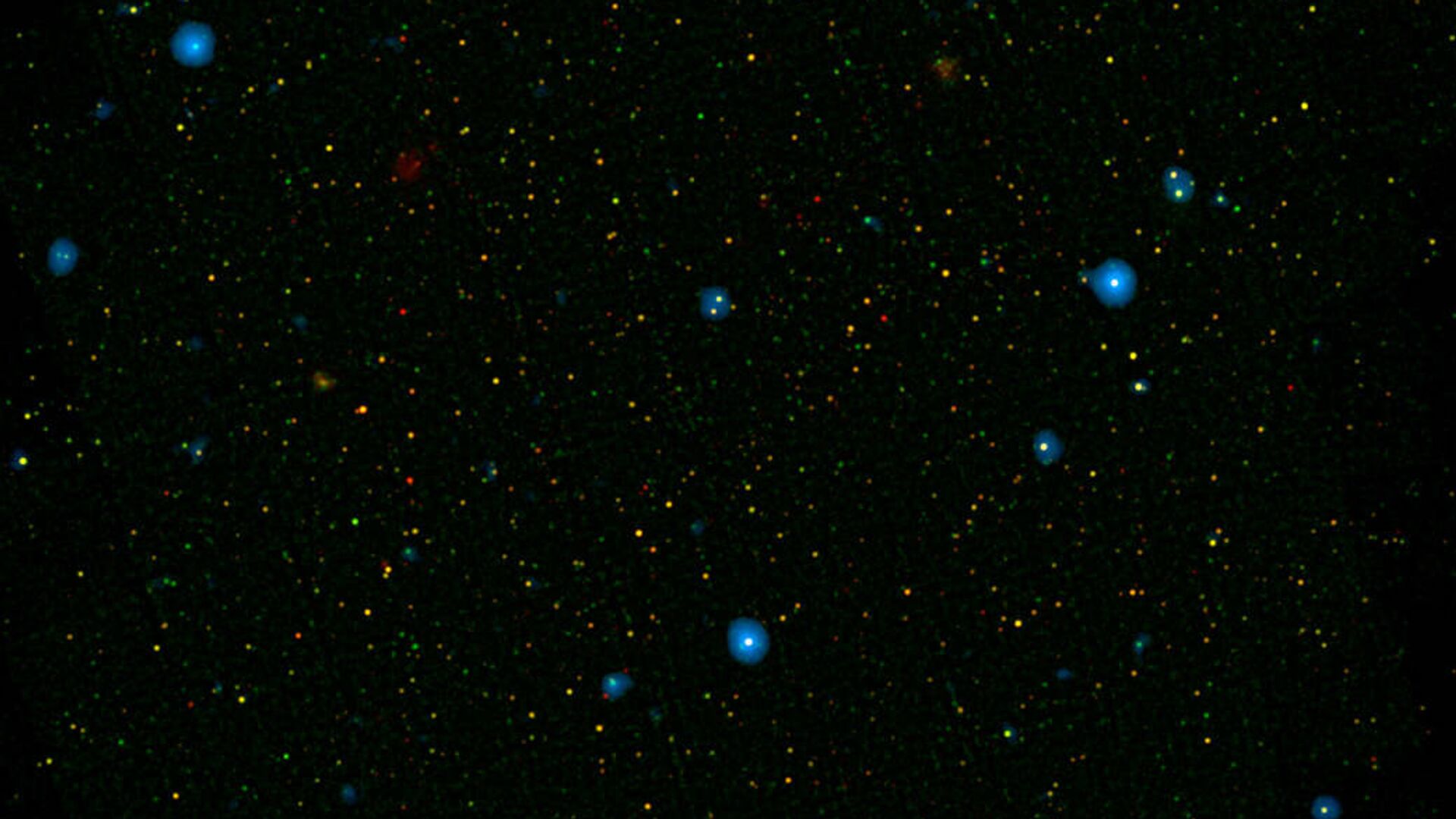https://sputnikglobe.com/20221220/scientists-want-to-use-gravity-to-detect-alien-spacecrafts--1105628916.html
Scientists Want to Use Gravity to Detect Alien Spacecrafts
Scientists Want to Use Gravity to Detect Alien Spacecrafts
Sputnik International
People have long wondered whether there's life in outer space. The physicist Enrico Fermi even put forward a famous paradox, which runs along the lines of "If... 20.12.2022, Sputnik International
2022-12-20T11:21+0000
2022-12-20T11:21+0000
2022-12-20T11:21+0000
science & tech
cosmos
laser interferometer gravitational-wave observatory (ligo)
spacecraft
gravity
gravitational waves
https://cdn1.img.sputnikglobe.com/img/104379/17/1043791763_0:228:1041:814_1920x0_80_0_0_992e527b6d71de51d8e7146b0bbc2c5e.jpg
In a new paper now in preprint, a team of researchers proposes using a Laser Interferometer Gravitational-Wave Observatory (LIGO) to track gravity waves. They suggest that alien spacecraft (Rapid And/or Massive Accelerating spacecraft (RAMAcraft), as the study calls them), should one exist, could leave behind gravitational waves that could be detected here on Earth.The researchers specified some of the factors that would need to occur for such a scenario to develop. First, they calculated that the ship would have to be about the size of Jupiter to generate gravitational waves capable of reaching Earth.The ship must also travel very fast, at about a tenth the speed of light (almost 300,000,000 m/s). And it must be close enough - about 326,000 light-years from Earth (the Milky Way is 100,000 light-years across). Only under these conditions could the LIGO researchers detect the gravitational waves generated by the alien spacecraft.The researchers also noted that if aliens use warp engines, scientists on Earth would also be able to detect them using the same technology, because such a ship would also generate gravitational waves.The LIGO is a large-scale physics experiment and observatory designed to detect cosmic gravitational waves and to develop gravitational-wave observations as an astronomical tool. Two large observatories were built in the United States with the aim of detecting gravitational waves by laser interferometry. These observatories use mirrors four kilometers apart which are capable of detecting a change of less than one ten-thousandth the charge diameter of a proton.
Sputnik International
feedback@sputniknews.com
+74956456601
MIA „Rossiya Segodnya“
2022
News
en_EN
Sputnik International
feedback@sputniknews.com
+74956456601
MIA „Rossiya Segodnya“
Sputnik International
feedback@sputniknews.com
+74956456601
MIA „Rossiya Segodnya“
using gravitational waves to detect aliens, aliens' ships how to detect, using ligo to detect aliens, what is ligo
using gravitational waves to detect aliens, aliens' ships how to detect, using ligo to detect aliens, what is ligo
Scientists Want to Use Gravity to Detect Alien Spacecrafts
People have long wondered whether there's life in outer space. The physicist Enrico Fermi even put forward a famous paradox, which runs along the lines of "If life is so easy, someone from somewhere must have come calling by now". A new study offers yet another way to explore the vastness of space, in an attempt to solve the puzzle.
In a new paper now in
preprint, a team of researchers proposes using a Laser Interferometer Gravitational-Wave Observatory (LIGO) to track gravity waves. They suggest that alien spacecraft (Rapid And/or Massive Accelerating spacecraft (RAMAcraft), as the study calls them), should one exist, could leave behind gravitational waves that could be detected here on Earth.
The researchers specified some of the factors that would need to occur for such a scenario to develop. First, they calculated that the ship would have to be about the size of Jupiter to generate gravitational waves capable of reaching Earth.
“Our study of warp drives has paved the way for gravitational wave detection,” says Gianni Martire, one of the co-authors. “This new method is not limited to the traditional range of electromagnetic signals; thus we already have the ability to probe all 1011 stars in the Milky Way for warp drives, and soon, the ability to probe thousands of other galaxies.”
The ship must also travel very fast, at about a tenth the speed of light (almost 300,000,000 m/s). And it must be close enough - about 326,000 light-years from Earth (the Milky Way is 100,000 light-years across). Only under these conditions could the LIGO researchers detect the gravitational waves generated by the alien spacecraft.
“At present, our methods apply to a general class of... RAMAcraft far from Earth. In the future, we hope also to generalize the methods to smaller objects closer to home,” says Luke Sellers of the Advanced Propulsion Laboratory (APL) at Applied Physics, one of the co-authors.
The researchers also noted that if aliens use warp engines, scientists on Earth would also be able to detect them using the same technology, because such a ship would also generate gravitational waves.
The LIGO is a large-scale physics experiment and observatory designed to detect cosmic gravitational waves and to develop gravitational-wave observations as an astronomical tool. Two large observatories were built in the United States with the aim of detecting gravitational waves by laser interferometry. These observatories use mirrors four kilometers apart which are capable of detecting a change of less than one ten-thousandth the charge diameter of a proton.

